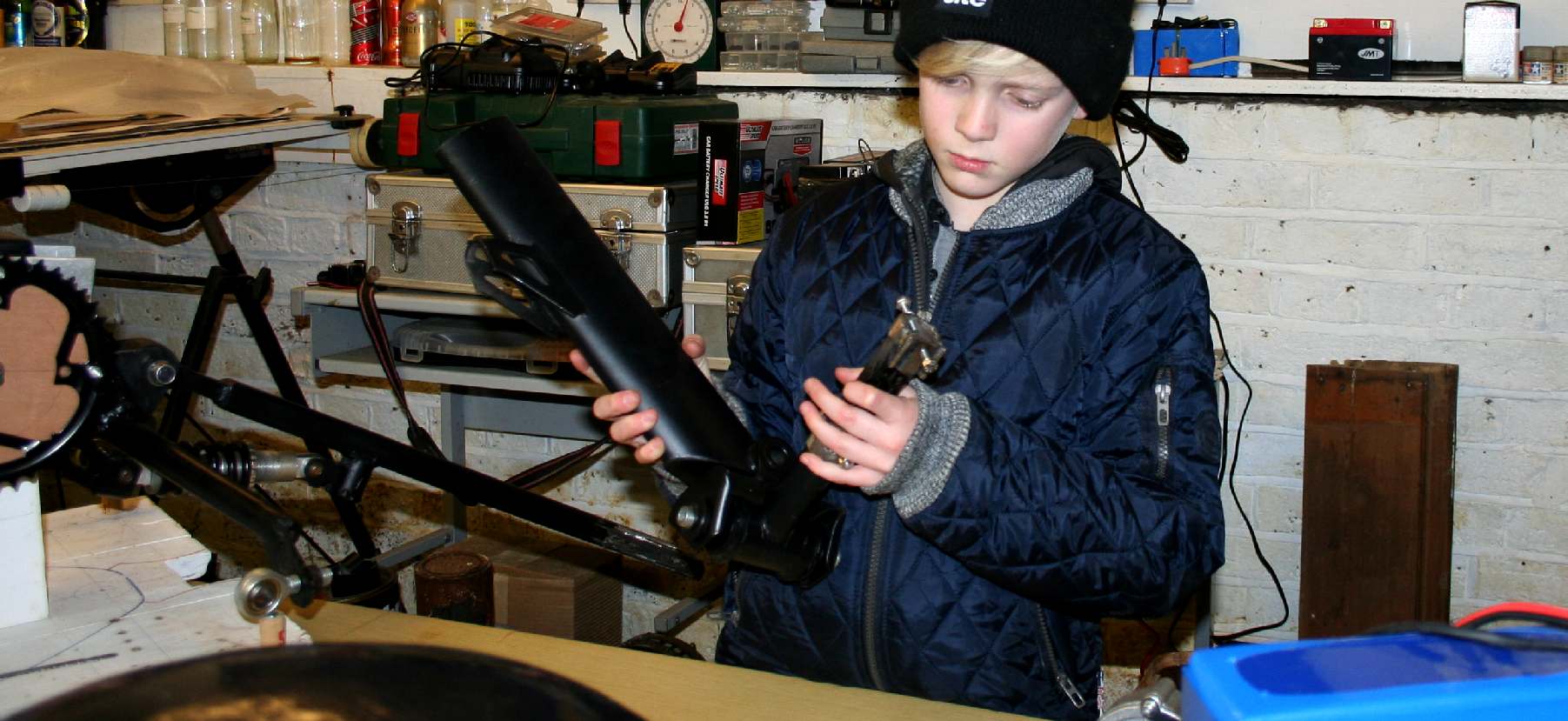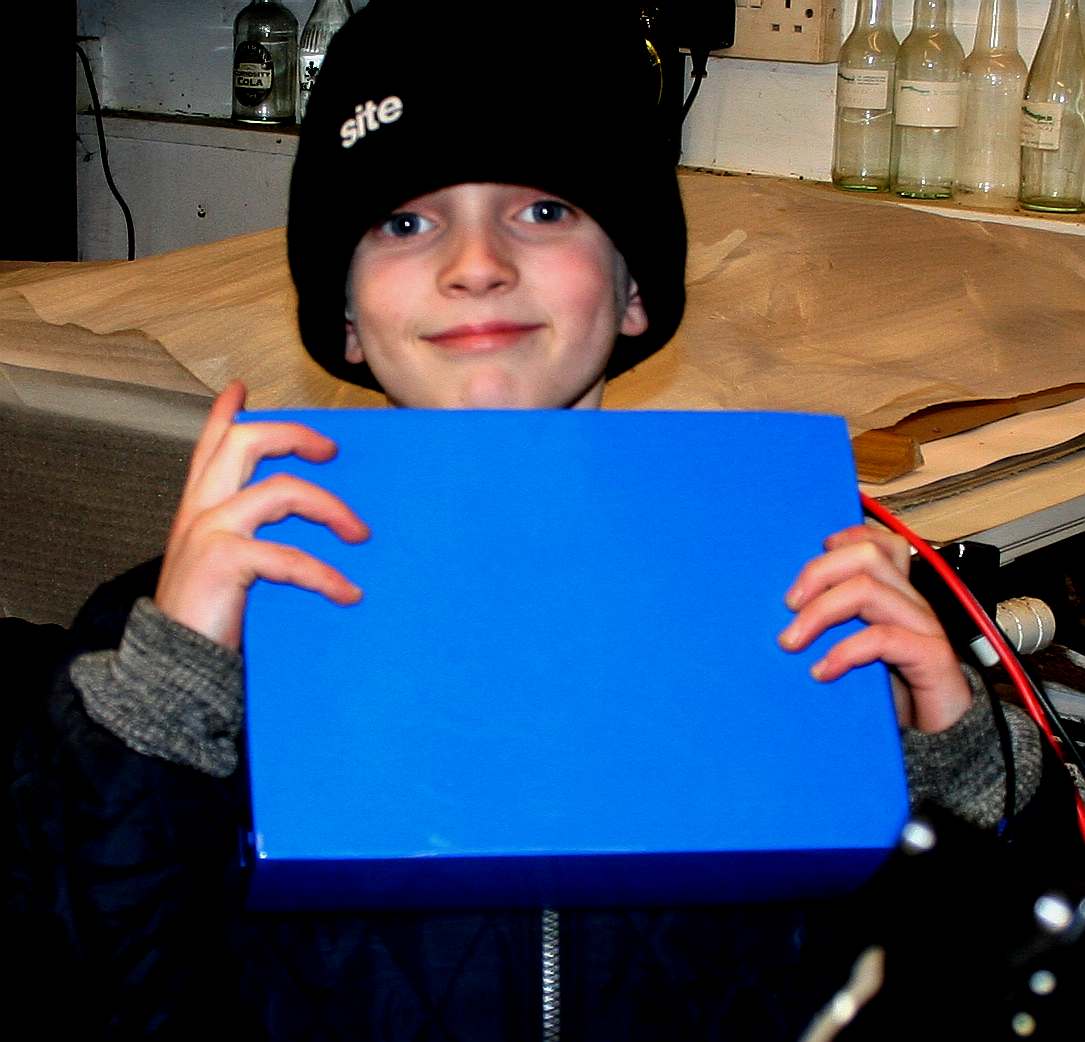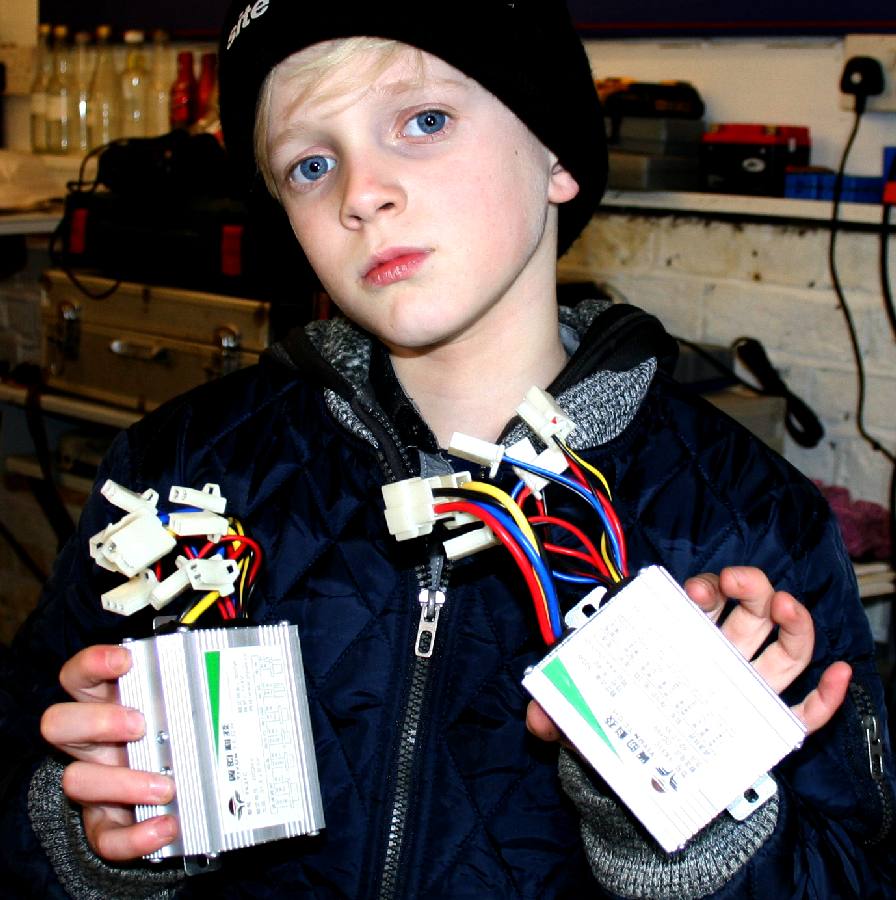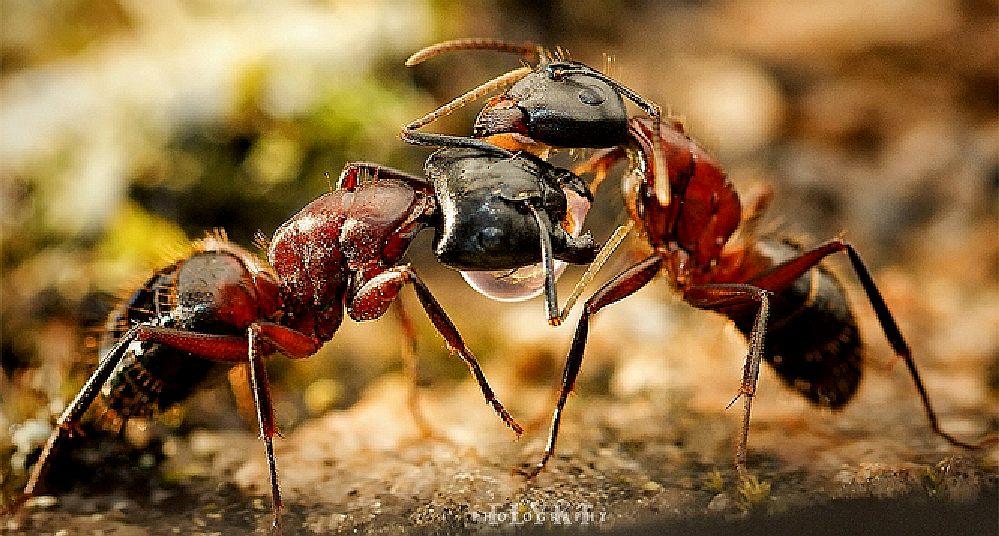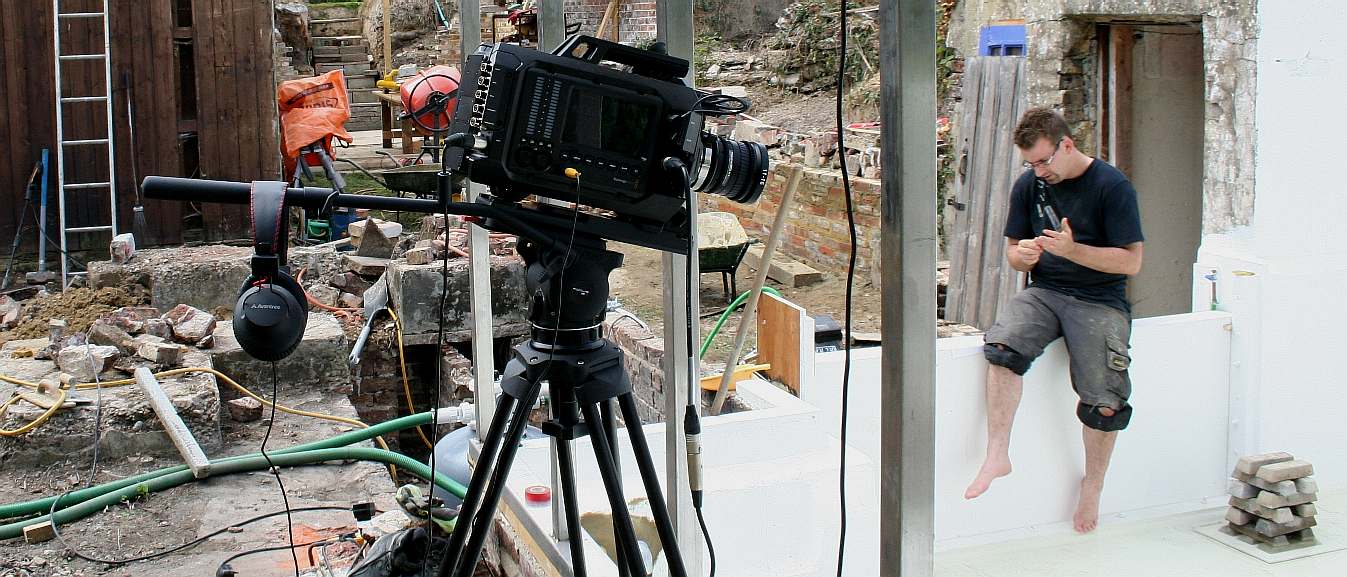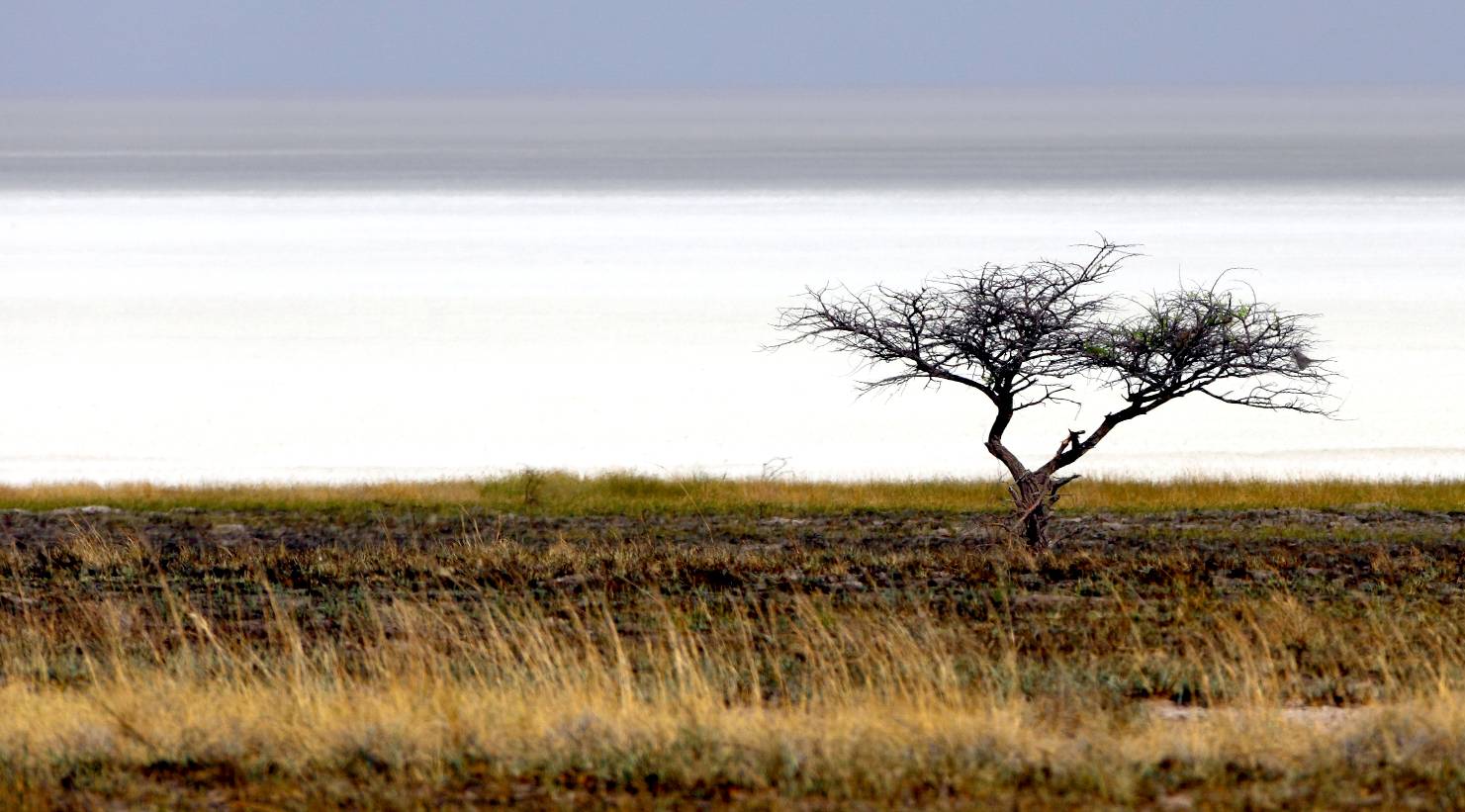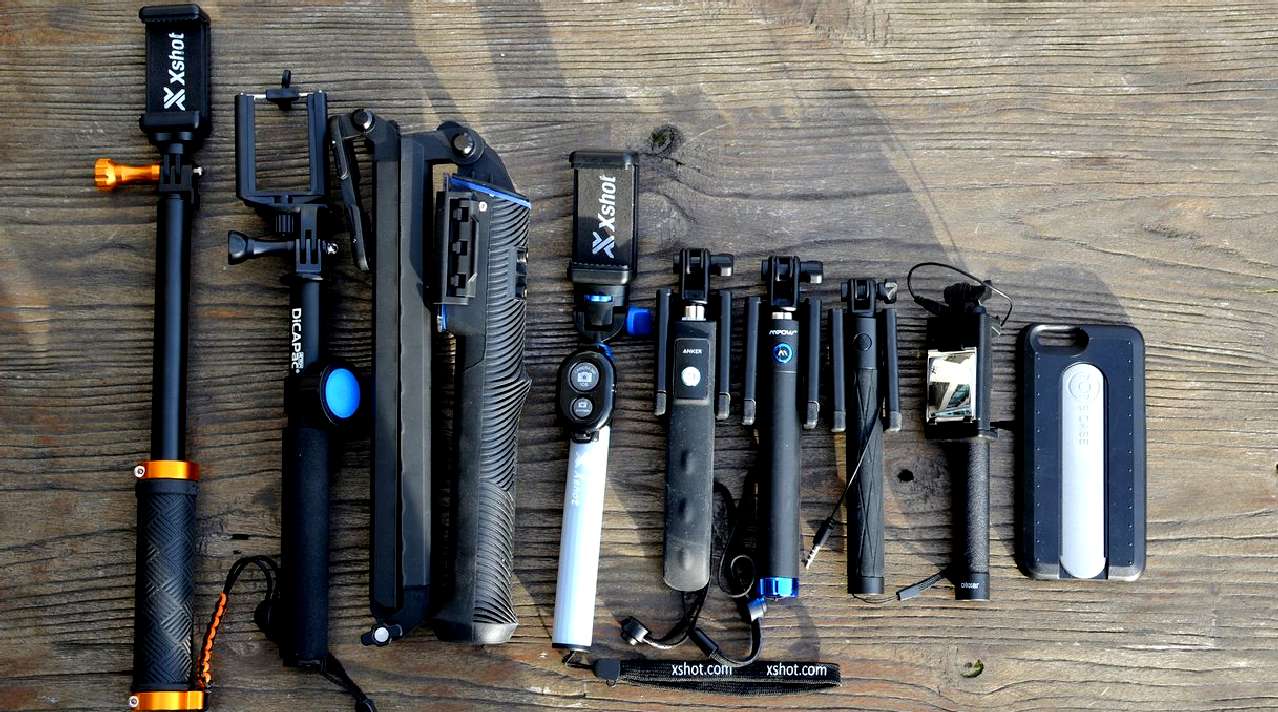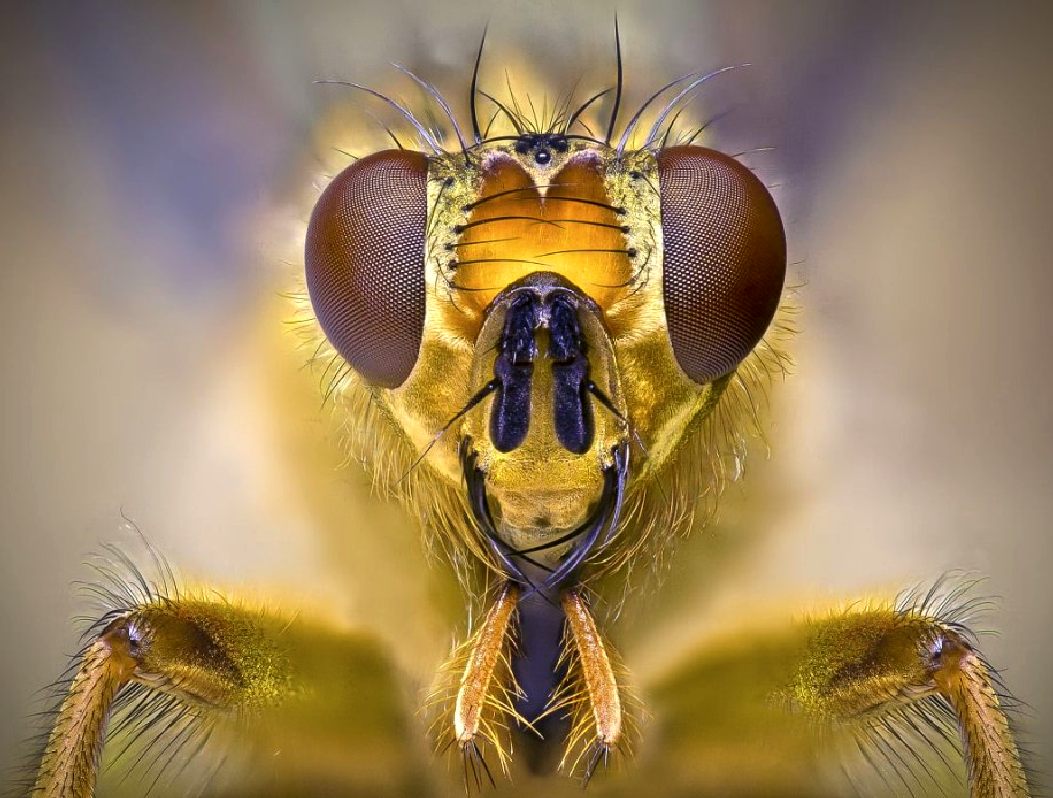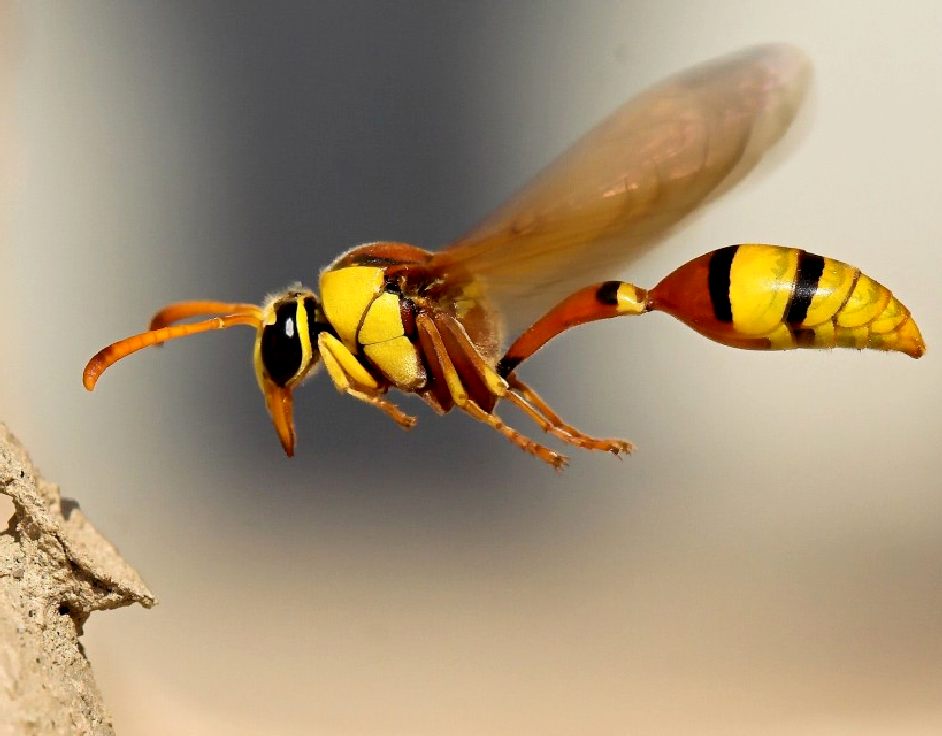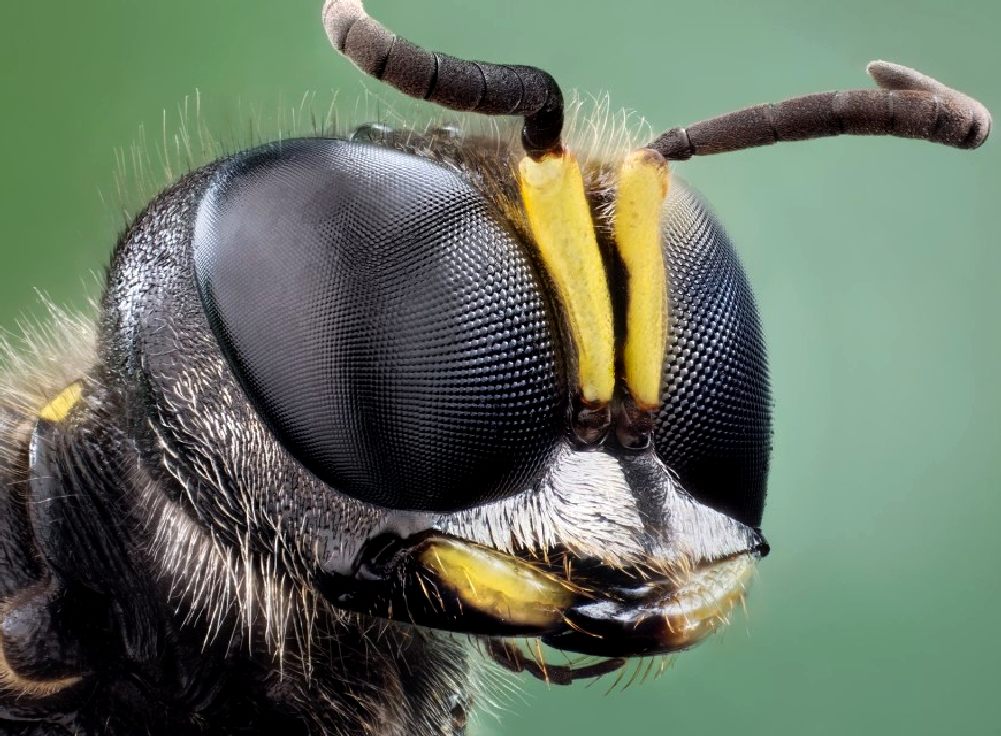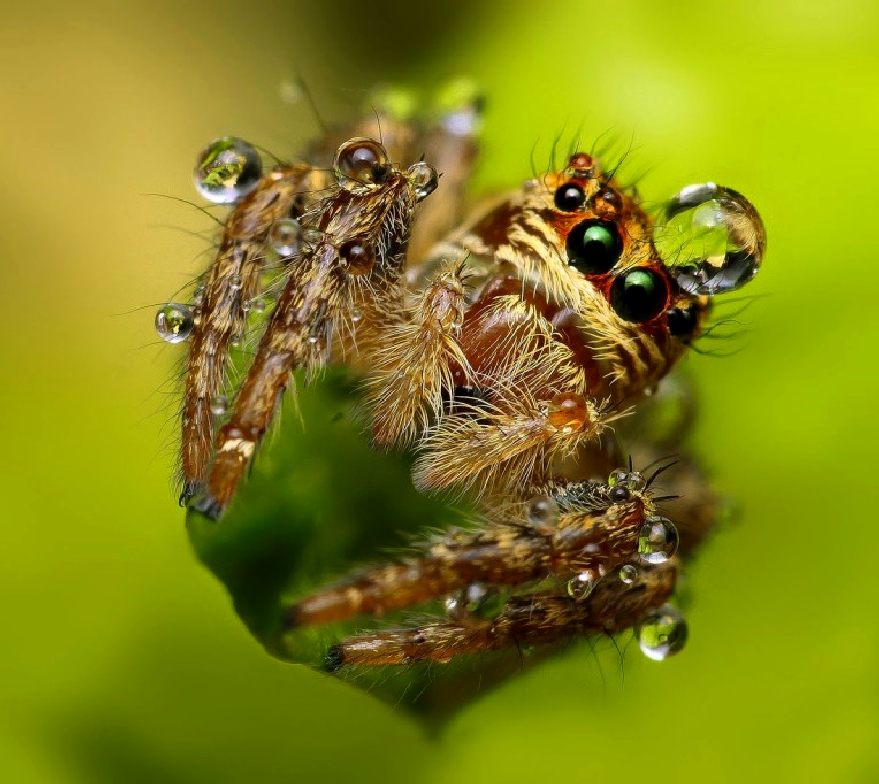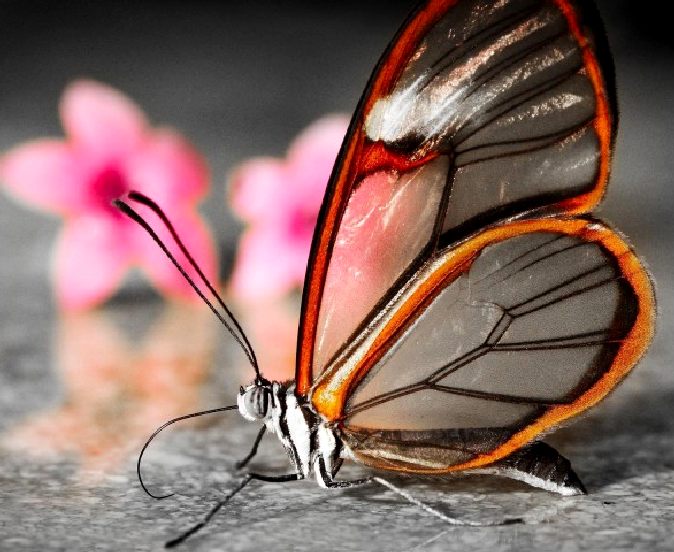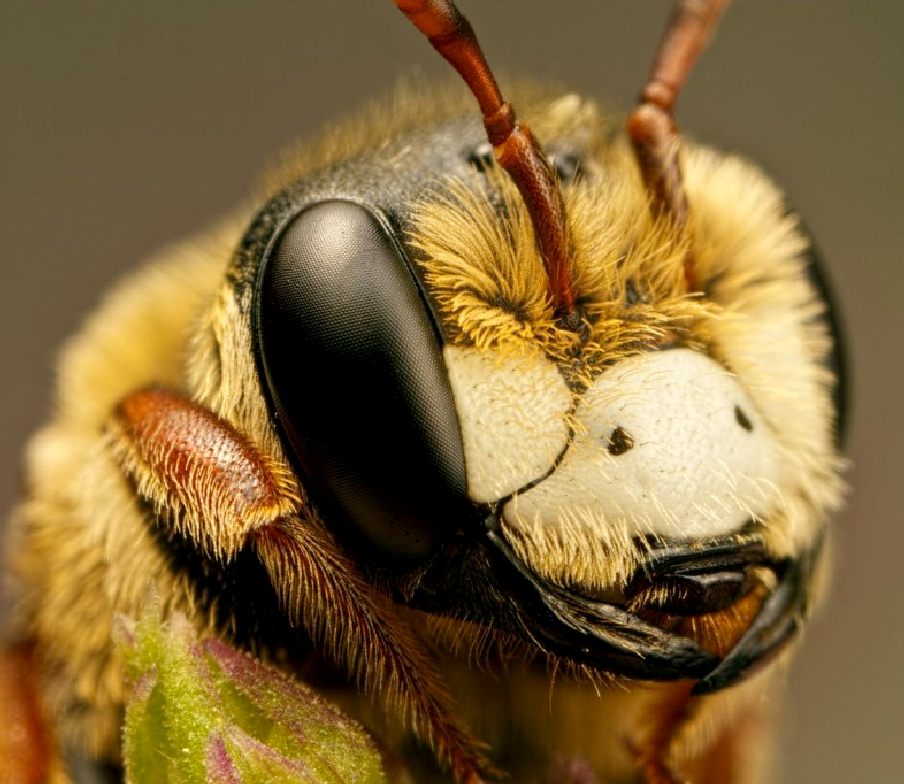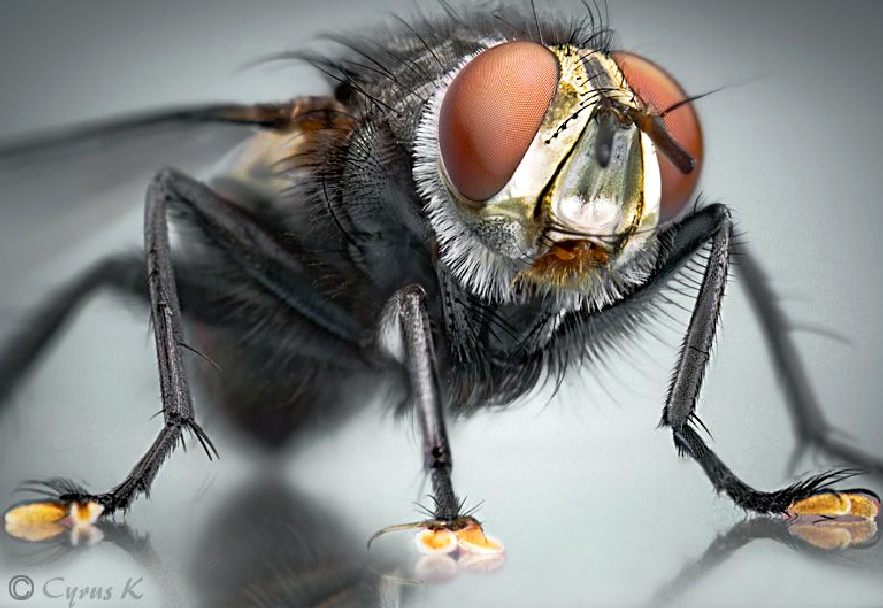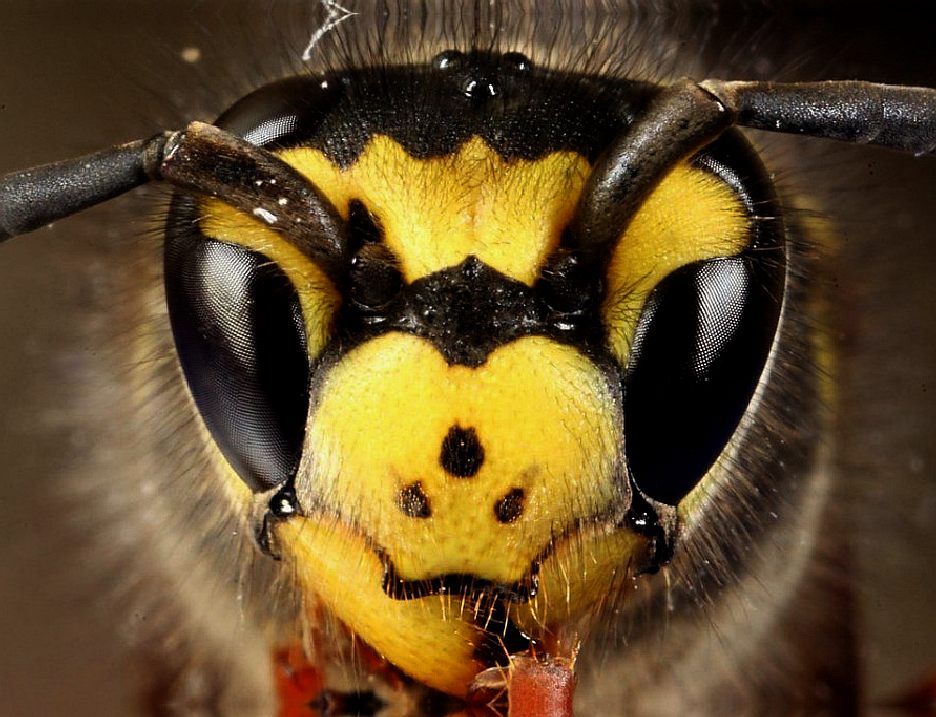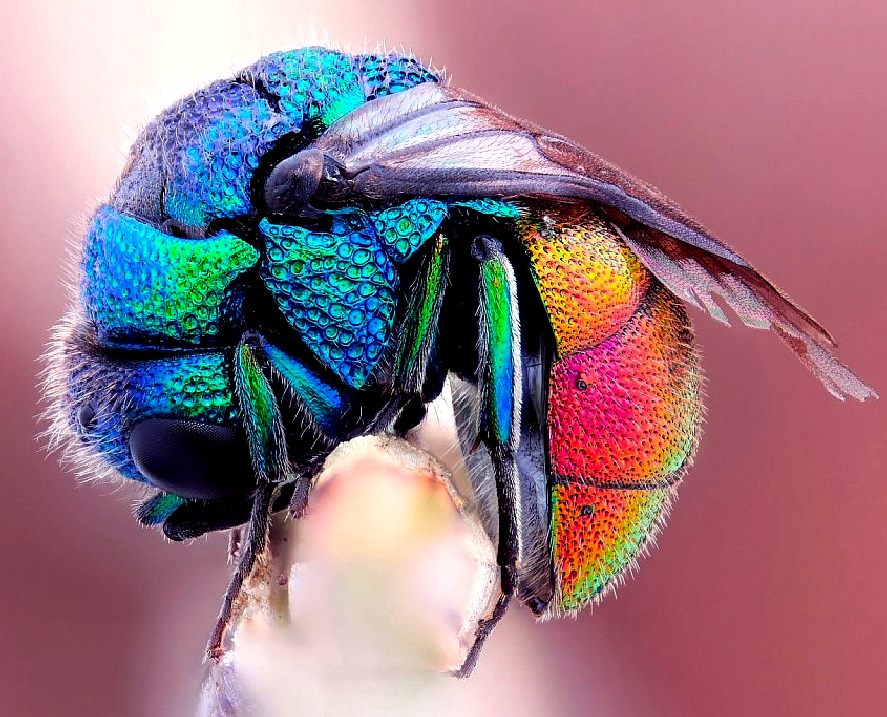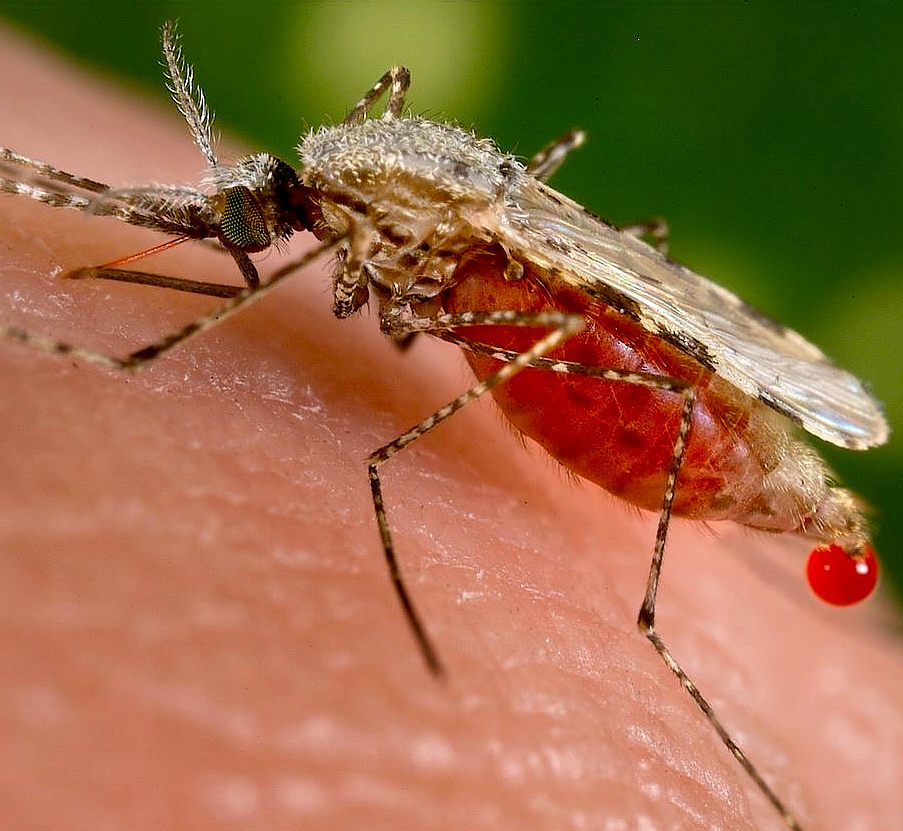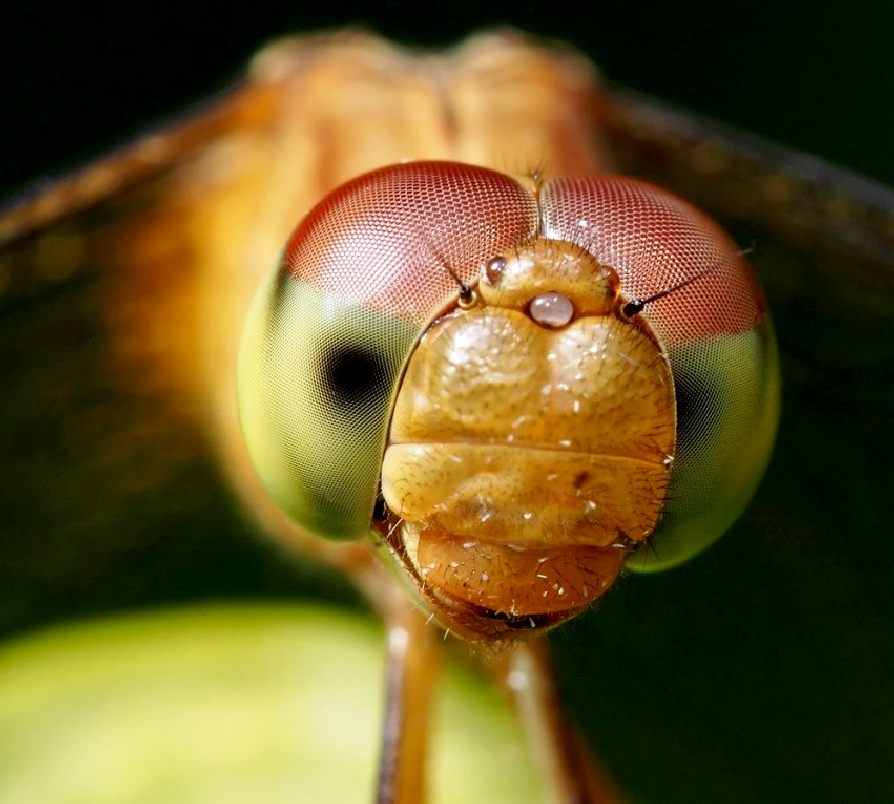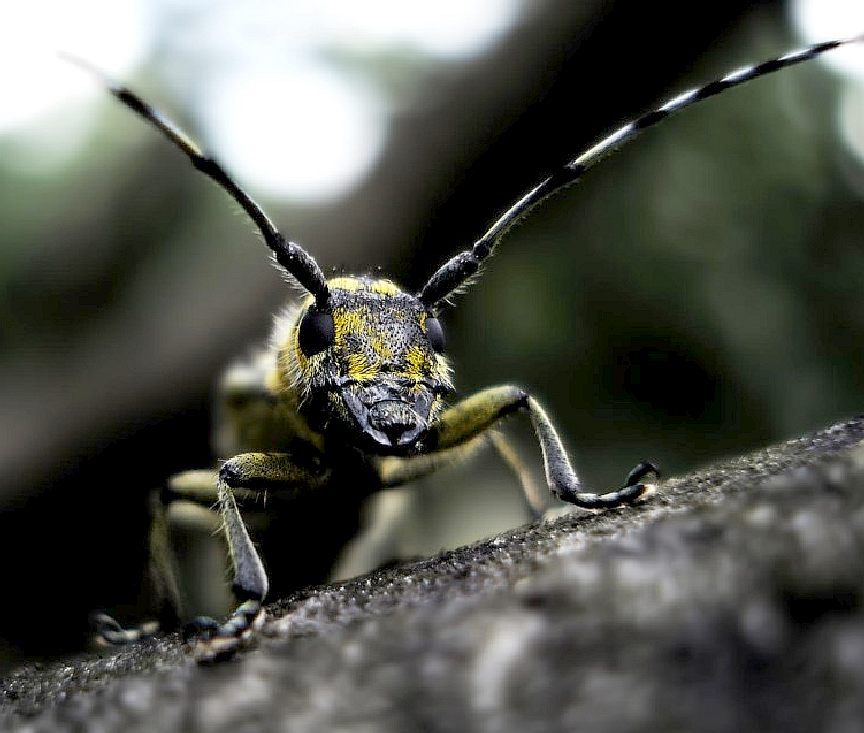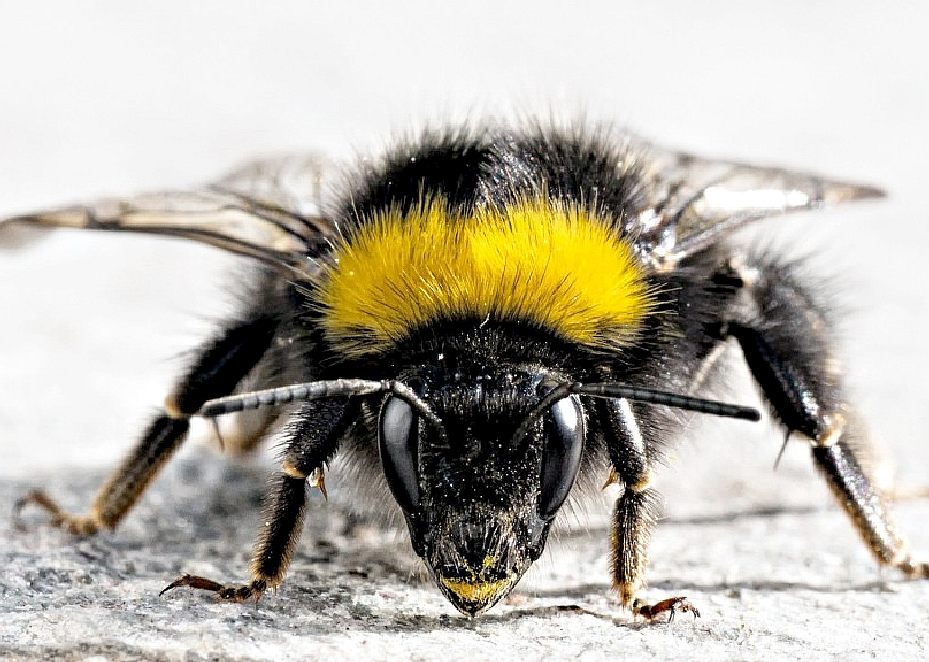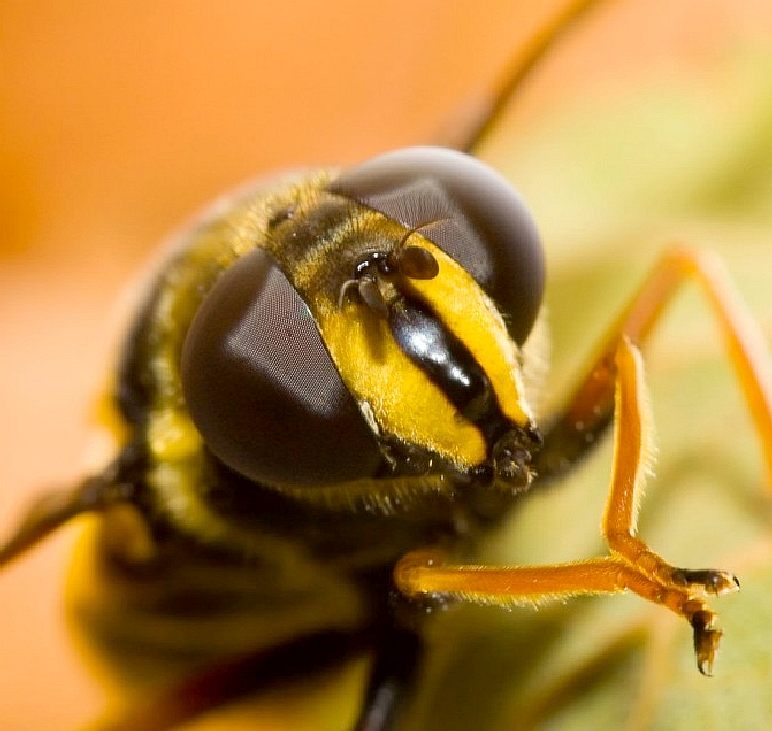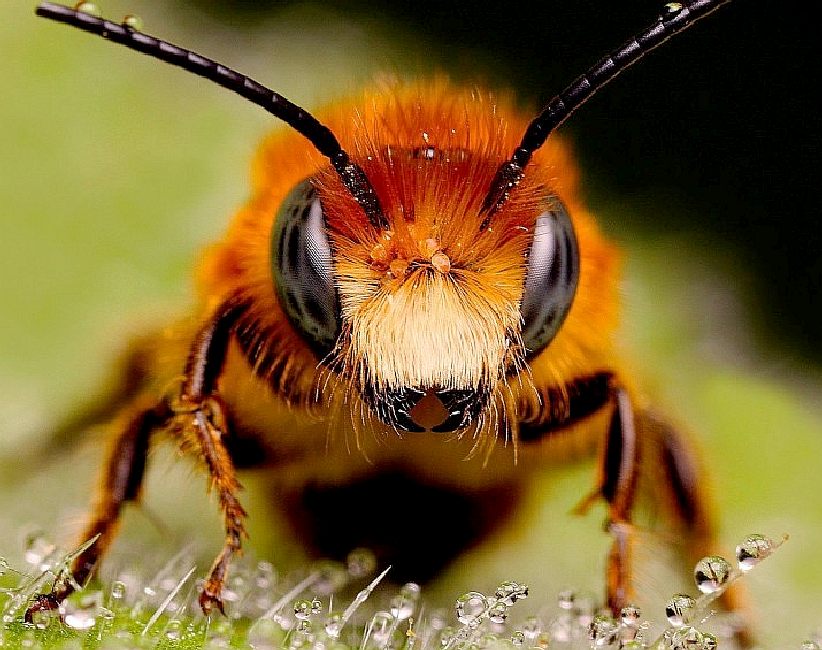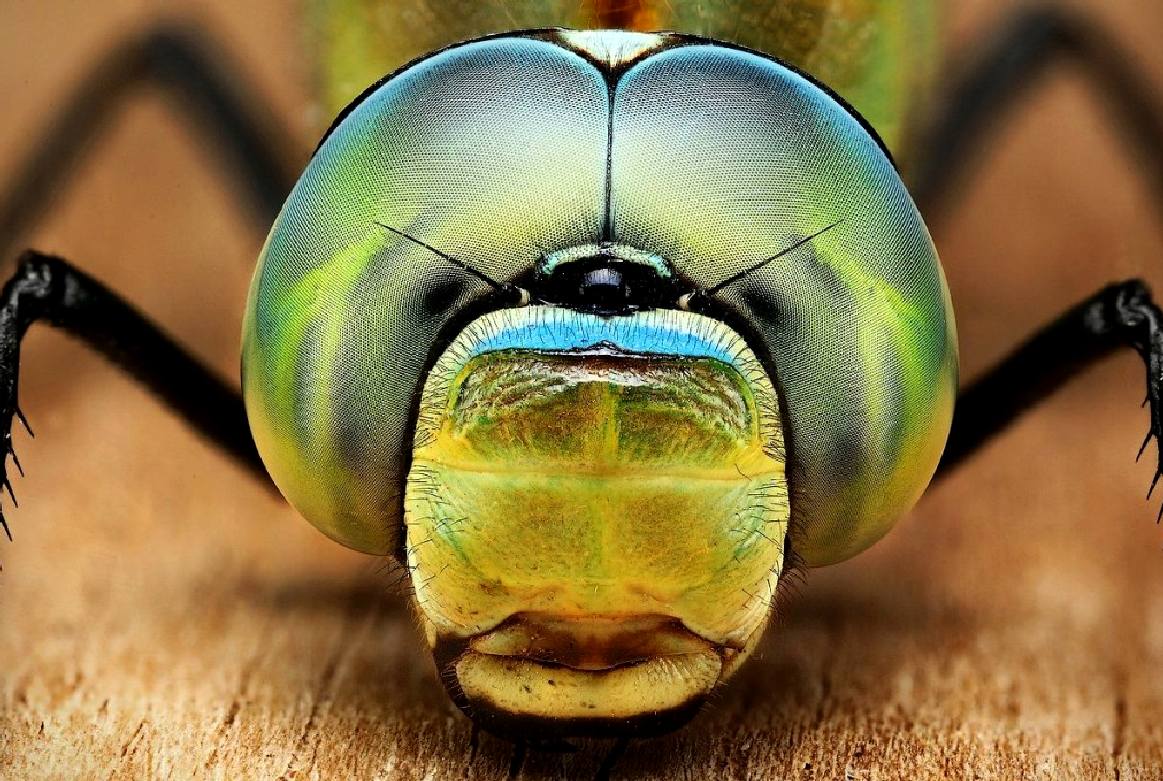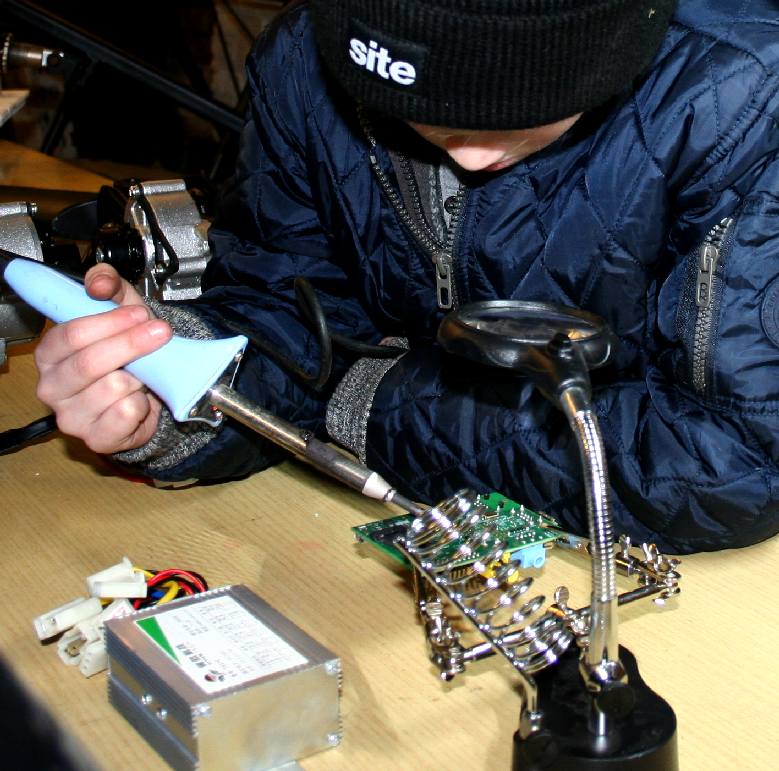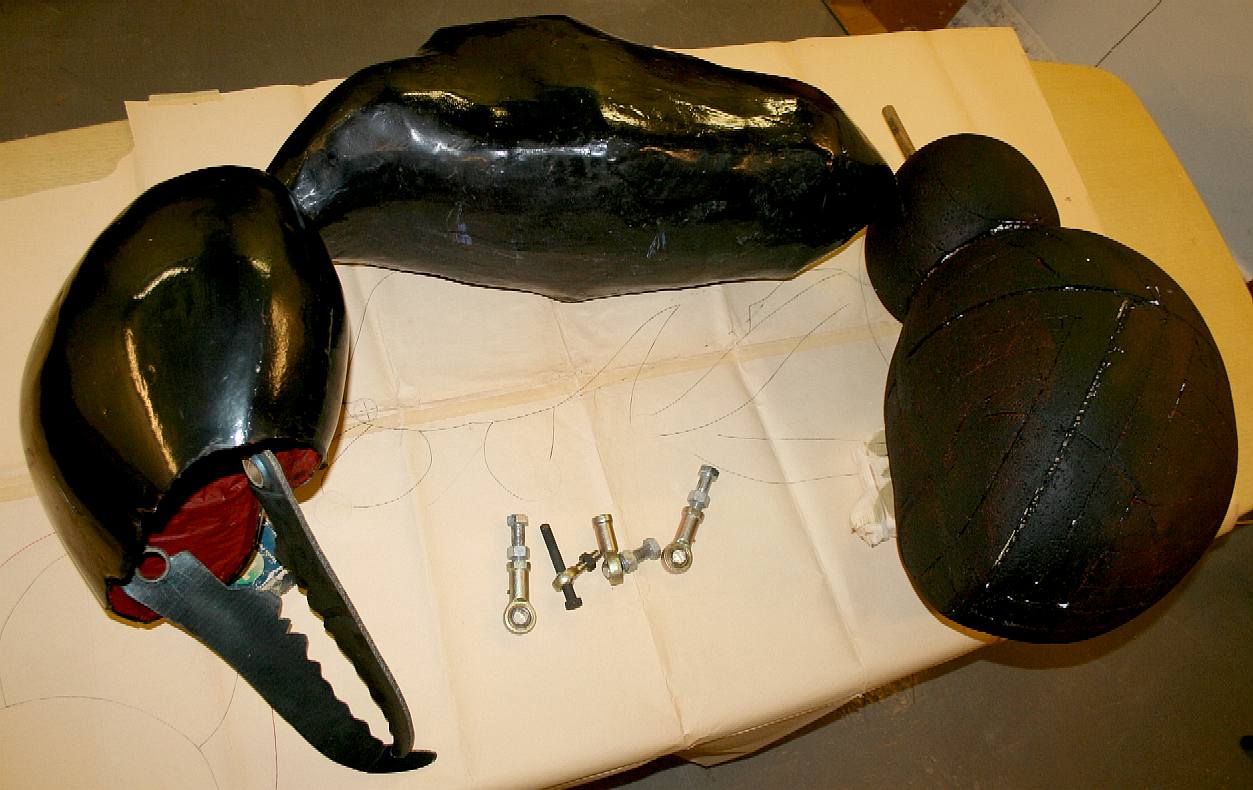|
DIY - TIPS ON HOW TO CREATE GREAT PHOTOGRAPHS OF INSECTS
ANTICS - ARDUINO - ARMOUR - ARTWORK - BIOLOGY - BLACK BOX - COMPUTERS - ELECTRONICS - ENERGY - FRAME FORMICARIUM - HEAD - JAWS - JIMMY WATSON - KITS - LEGS - MECHANICS - MOTORS - MOVIE - PHOTOGRAPHY - RASPBERRY Pi R/C DRONE - SENTRY SOFTWARE - SOUND PROOFING - SPACE ROVERS - SPEED - SUSPENSION - TAIL - UKRAINE DRONES - WEAPONS - WARGAMING
|
|
|
NECK JOINT - Let loose in the robot store, a young engineer checks out the range of movement of Dino the Dinobot's head mountings. Photography plays a big part in the making of such animatronic machines.
There are thousands photographs from numerous well known and not so well known macro photographers that are used to illustrate the world of insects as may inspire animatronic artists and engineers to create their robotic masterpieces. Indeed, photography can enhance details of a project, where projector or other measuring techniques often fall short in this department and using a microscope is tiring on the eye and lacks perspective, unless using a stereoscopic instrument.
Thank heavens then for the internet and the large number of photographic enthusiasts - and reasonably priced camera equipment - without which the world would be a more mundane place to live in. On these pages we review the work of some of those amateurs and professionals, who have more experience and useful information to share as you find your feet in the world of 2D imagery.
ROBOT INSECT PARTS - Our most junior robotics engineer, Ryan, checks out the 2kW hour 48 volt lithium battery pack and the electronic speed controllers for the 500 watt 2/3rd horsepower motors. One way of accelerating learning is to allow younger team members to get involved with a real project that interests them.
1. GET CLOSER
It was the famous photo journalist Robert Capa who is quoted as saying: “If your photographs aren’t good enough, you’re not close enough.” He was talking about getting in where the action is. If you feel like your images aren’t cutting it, consider taking a step or two closer to the subject. try to fill the frame with your subject and see how much better your photo will look without so much wasted space. The closer you are to the subject, the better you can see the detail, but artistic composition may suffer.
2. PRACTICE MAKES PERFECT
The best way to
improve your skills is to practice. Shoot as much as you can, and vary the
topic to gain experience with the familiar and the unfamiliar. Just spend
time behind your camera
and get to know it. As your technical skills improve over time, your ability to harness them to tell stories
should also. Experiment. "Your style – your ‘voice’ – will emerge in time. And it will be more authentic when it does."
Quote: Leah Robertson
3. SEE THE LIGHT
Before you raise your camera, check where the light is coming from and use it to your advantage. Whether it is natural light coming from the sun, or an artificial source like a lamp; work out how you can use the light to make your photos better. Ask yourself:
1. How is the light interacting with the scene and the subject? 2. Is it highlighting an area or casting interesting shadows?
These are key things to consider to make an ordinary photo extraordinary.
4. PERMISSION PLEASE
When photographing people (especially while in countries with different cultures and languages) it can be hard to communicate. In certain countries if you photograph someone you are not ‘supposed’ to photograph, it can get ugly and rough very quickly if you are not careful. So out of respect you should always ask permission.
"I have started shooting a series of school children in Pakistan. These are all posed portraits and they are looking down the lens. My guide helps me with the language and I limit myself to smiling, shaking hands, giving ‘hi-five’ and showing them the image on the back of my camera once it is done. You would be amazed how quickly people open up."
Quote: Andrea Francolini
5. FLASH FOR MORE LIGHT
You might think that you should only use flash at night time or indoors, but that is not the case at all. If it is an extremely bright day outside and the sun is creating harsh shadows on your subject, switch on your flash. By forcing extra light onto your subject, you will be able to fill in those ugly shadows and create an even exposure.
6. ISO
In traditional (film) photography ISO or ASA, was the indication of how sensitive a film was to light. ISO stands for 'International Organization for Standardization. It was measured in numbers (you’ve probably seen them on films – 100, 200, 400, 800 etc). The lower the number the lower the sensitivity of the film and the finer the grain in the shots you’re taking.
There are questions to ask yourself when deciding what ISO to use:
2.
If you are shooting outside during the middle of the day you will need to use a lower ISO such as 100 or 200. If you are shooting at night time without a tripod you will have to increase the ISO to a higher number to be able to record the light on the camera’s sensor.
If your subject or scene is too dark you will need to use a higher ISO such as 800 or 1600.
Using a high shutter speed to capture fast movement might mean that you need to use a high ISO to compensate. Likewise, if you’re using a slow shutter speed to capture blur you will need a low ISO to compensate.
7. F/4
In optics, the f-number (sometimes called focal ratio, f-ratio, f-stop, or relative aperture) of an optical system is the ratio of the lens's focal length to the diameter of the entrance pupil. It is a dimensionless number that is a quantitative measure of lens speed, and an important concept in photography. The number is commonly notated using a hooked f, i.e. f/N, where N is the f-number.
"f/4 is my ‘go to’ aperture. If you use a wide aperture with a long lens (200mm-400mm) you’re able to separate the subject from the background. This helps them stand out. Works every time." Quote: Peter Wallis. Peter Wallis is a sports photographer extraordinaire, working for The Courier Mail in Brisbane.
8. YOU'RE JOKING
A well timed joke will always yield a more natural smile, than simply saying “smile.” Quote: Dean Bottrell
Dean Bottrell is a Emerald based photographer who specializes in portraiture.
8. BUY BOOKS NOT GEAR
Having expensive camera equipment doesn’t always mean that you’ll take good photos. I’ve seen some absolutely amazing images shot with nothing more than a smart phone. Instead of having ten different lenses, invest in some good photography books. By looking at the work of the masters not only do you get inspired you come away with ideas to improve your own photos. This web page is only the beginning.
9. READ THE INSTRUCTIONS
Oh no not more instructions. Unfortunately, and very few people have the time to read all of the paperwork that comes with a new purchase, the best way to know what to do with your camera is to actually read the manual. So many people miss this really important step on their photographic journey including the writer. But when you do take the time, you'll find that every camera is different, so by reading the manual you’ll get to know all the things it’s capable of.
10. FRAMING
This is a technique to use when you want to draw attention to something in your photograph. By framing a scene or a subject, say with a window or an archway, you lead the viewer’s eye to the primary focal point. Granted, there are only few occasions when there is a convenient arch.
ACTION STATIONS - Our techie, Jamie, sets up a Black Magic movie camera aiming at the empty test tank with Chris, our project manager, in the background sorting out a tank sealing niggle. In reality, camera equipment will be inside a closed chamber with controlled lighting. The rubble you see on the lower left of this picture is now a smooth decked surface with a weather proof canopy above. In the distance you can see a cement mixer and the temporary steps that have now been replaced with a permanent wooden staircase. Copyright © 29 July 2016. You will need permission from Bluebird Marine Systems Ltd to reproduce these photographs, except for private study or media review.
11. SHAPE WITH LIGHT
"Never shoot with the sun directly behind you. It creates boring, flat light on the subject. If you shoot with the light source to the side or behind the subject, you are able to shape with the light, creating a more interesting photo." Quote: Patria Jannides
12. SHUTTER SPEED
Being aware of your shutter speed means the difference between taking a blurry photo and a sharp photo. It all depends on what you are trying to achieve. If you are shooting a sporting event or children running around in the backyard, you probably want your subjects to be in focus. To capture fast action you will have to use a shutter speed over 1/500th of a second, or maybe even 1/1000th to 1/2000th. On the opposite end of the scale, you might want to capture the long streaks of a car’s tail lights running through your shot. Then you would change your camera’s shutter speed to a long exposure. This could be one second, ten seconds, or even longer. You'll have to try different settings to know what will work for you.
13. CHARGE THE BATTERIES
Very basic preparation but pretty much every photographer on the face of the planet has been caught out before. Including the writer. We tend to keep snapping until the camera objects, and only then swap batteries. The trick is to put the battery onto the charger as soon as you get home from your photo shoot and keep a spare in the carry case so that you can keep snapping. Remember to put the charged battery back into the camera case after it has been recharged.
14. FOCAL LENGTH
Keep it simple. Justin Wilkes shoots with two prime lenses and one camera; A 28mm and a 35mm. For everything. She uses the 35mm lens 70% and the 28mm lens 30% of time. It takes some time to get used to it, but once you work it out, shooting primes is the only way to go. It means you have to work with what you have and you can’t be lazy. Basically, this means more pictures and less fiddling around with zooming and maybe missing moments. It also helps for consistency. If you’re working on a project or a series, keeping the same focal lengths is a great way to maintain a powerful sense of consistency.
15. SHOOT WITH YOUR MIND
Even when you’re not shooting, shoot with your mind. Practice noticing expressions and light conditions. Work out how you’d compose a picture of that scene over there that interests you, and what sort of exposure you might use to capture it best. Quote: Leah Robertson
16. CARRY A CAMERA AT ALL TIMES
You can’t take great photos if you don’t have a camera on you. DSLR, point-and-shoot or smart phone, it doesn’t really matter. As long as you have access to a camera, you’re able to capture those spontaneous and unique moments in life that you might have otherwise missed. Photography is all about being in the right place at the right time. If you can't be in the right place at the right time, you'll have to fake it like they do in the movies with film sets.
17. CHECK OUT THE BACKGROUND
What’s in your frame? So often I see great photos and think “didn’t they see that garbage bin, ugly wall, sign, etc?” It’s not just the person or object in your frame, it’s everything else in the background that can make or break a great photograph. So don’t be afraid to ask the person to move (or move yourself) to avoid something ugly in the background. Quote: Marina Dot Perkins
18. SHADY
Shade can be your best friend. If there is no way you can make the available light work for your photo, shoot in the shade. You’ll get a nice even exposure with no patchy highlights throughout your shot.
19. RULE OF THIRDS
This is one of the most common tips that pop up when it comes to improving your photos To break it down, you cut your frame into thirds by using both horizontal and vertical lines. You then place your point of interest over the cross sections of the grid.
20. GET A GRIP
You might not know it, but there is a right way and a wrong way to hold a DSLR camera. The correct way is to support the lens by cupping your hand underneath it. This is usually done with the left hand, with your right hand gripping the body of the camera. This helps to prevent camera shake. If you are gripping your camera with your hands on either side of the camera body, there is nothing supporting the lens, and you might end up with blurry photos. To get an even stabler stance, tuck your elbows into the side of your body.
Much of the above was inspired by an original article by Lisa Clarke. Lisa is based in Rockhampton and is the ABC Open producer for Capricornia in Australia.
MOBILE PHONE PHOTOGRAPHY TIPS
1. USE GRIDLINES
One of the easiest and best ways to improve your mobile photos is to turn on the camera's gridlines. That superimposes a series of lines on the screen of your smartphone's camera that are based on the "rule of thirds" - a photographic composition principle that says an image should be broken down into thirds, both horizontally and vertically, so you have nine parts in total. According to this theory, if you place points of interest in these intersections or along the lines, your photo will be more balanced, level, and allow viewers to interact with it more naturally.
The rule of thirds is a "rule of thumb" or guideline which applies to the process of composing visual images such as designs, films, paintings, and photographs. The guideline proposes that an image should be imagined as divided into nine equal parts by two equally spaced horizontal lines and two equally spaced vertical lines, and that important compositional elements should be placed along these lines or their intersections. Proponents of the technique claim that aligning a subject with these points creates more tension, energy and interest in the composition than simply centering the subject.
2. FOCUS ON THE MAIN EVENT
Many of the best photos include just one, interesting subject. So when taking a picture of one, spend some extra time setting up the shot. Some professional photographers say that the subject shouldn't fill the entire frame, and that two-thirds of the photo should be negative space
- that helps the subject stand out even more.
3. EMBRACING NEGATIVE SPACE
"Negative space" simply refers to the areas around and between the subjects of an image
-and it can take a photo from "good" to "great."
4. DIFFERENT PERSPECTIVES
Taking photos from a unique, unexpected angle can make them more memorable
- it tends to create an illusion of depth or height with the subjects. It also makes the image stand out, since most mobile photos are taken either straight -on or from a bird's eye view.
5. USE REFLECTIONS
There's something so idyllic about seeing the sky reflected in a body of water. There's a reason why we love seeing that
- our eyes are drawn to reflections. So look for opportunities to play with them in photos.
6. LEADING LINES
In some photos, there's a line that draws the viewer's eye toward a certain part of the frame. Those are called leading lines. They can be straight or
circu-linear - think staircases, building facades, train tracks, roads, or even a path through the woods.
7. FIND THE SYMMETRY
Symmetry can be defined as "a vague sense of harmonious and beautiful proportion and balance." And pictures that contain symmetry can be incredibly pleasing to the eye
- it's also one of the simplest and most compelling ways to compose a photo.
8. CAPTURE REPETITIVE PATTERNS
Repetitive patterns are very pleasing to the eye - they appear whenever strong graphic elements are repeated over and over again, like lines, geometric shapes, forms, and colors. These patterns can make a strong visual impact, and photographing something like a beautiful, tiled floor can be enough to create a striking image. Other times, it's more fun to keep an eye out for where they appear naturally or unintentionally, like with the congruent fire escapes on the left.
9. FILM NOIR
Enter the world of black and white. There are applications for this. One worth a look at is Touch Color, an app that automatically converts a picture to grayscale and lets you fill in the parts you want to colorize.
10. RESIST ZOOMING
When you take a photo from a distance, it's tempting to zoom in on something specific you're trying to capture. But it's actually better not to zoom in - doing so can make the photo appear grainy, blurry, or pixelated.
11. THE DEVIL IS IN THE DETAIL
You may have heard the phrase, "It's the little things." Sometimes, that also applies to photos. Close-up images that capture small, intricate, and delicate details can make for really compelling visual content. Keep an eye out for textures and patterns like peeling paint, a gravel road, or a tile tabletop.
12. USING NATURAL LIGHT
Let's face it: You'd be hard-pressed to find a great smartphone photo that was taken with a flash. Most of the time, they make a photo look overexposed, negatively altering colors and making human subjects look washed out. In fact, even the
iPhone 7's flash is rumored to have some flaws.
13. CREATE ABSTRACTS
Abstract photos are meant to capture the essence of an object, or a series of them, without revealing the entire landscape as a whole. In other words, they serve the purpose of creating unique, surprising images from ordinary subjects.
14. CANDID CAMERA
Posed photos can be great for the sake of memories - happy moments with friends, family, or the occasional run-in with a celebrity. But sometimes, candid shots of people doing things, or people with people, can be far more interesting.
That's because candid photos are better able to effectively capture the emotion and essence of a moment. One of the best ways to capture this kind of shot is to just take as many photos as possible. You'll have more to choose from, and the best photos often happen when the "stars align," so to speak, in a single moment - everyone's eyes are open, one person is tilting their head just so, and you finally got a shot of your chronically closed-lip friend smiling with his teeth.
15. BE UNCONVENTIONAL
Composition is a huge part of what makes a photo great, but so is the photo's subject. Some of the most delightful and remarkable photos come out of cool, unique ideas. Images are more effective than text at evoking emotion from your viewers
- that often means getting your photos to say something.
17.
USE AN EXTERNAL LENS
16.
DON'T BE AFRAID TO EDIT
1) Removing blemishes from a picture, and
2) making food look even more delicious
For the first, InStyle magazine compiled a fun list of "The Best Instagram Filters for Every Beauty Complaint" - and now, the iPhone photos app offers many similar filters. There are also apps like Pho.to, which can automatically retouch facial photos without a lot of work. And when it comes to those photos of your daily meals? One of the latest apps available is Foodie, which comes with its own set of filters optimized for different types of food.
But there are many other great photo and video editing apps out there for mobile devices - check out this post to see some of the best ones out there.
17. MARS ATTACKS
Steady your camera with a tripod. If you have a hard time keeping your camera steady enough to photograph your subjects, then you might find it helpful to get a tripod. A tripod will keep your camera steady while still allowing you to adjust it to different angles.
MODERN WALKING CANES - From out of nowhere a business has blossomed and all because of the fierce competition for gadgets. The mobile phone is no longer a communication device, it is a status symbol - and a very useful one at that.
18. SELFIE STICKS
Selfie sticks are one of the best things since camera
phones if you need to get a picture of yourself in a landscape, event or
whatever and don't have a camera crew handy and this is one accessory that
does not cost the earth. But they aren’t all created equally even though many of them are produced in the same factory in China.
More tips are in the pipeline ...........
Despite their reputation as pests, the trillions of insects, bugs, and spiders that inhabit the Earth can make some of the most fascinating and dramatic close-up photography subjects. Insects and their tiny environments offer the macro photographer an unlimited amount of color, texture, and physical architecture to explore. They are as unique as we are, and they are obviously much more plentiful. As an added bonus, you won’t even have to get a “model release” after you’ve photographed them! During most months of the year, bugs can be found just about everywhere, and most make very willing subjects if you just learn how to find, approach, and compose them.
ABOUT COPYRIGHT
Works of "art" benefit from copyright protection the moment they are created and fixed in a tangible form that is perceptible either directly or indirectly with the aid of a machine or device. In order to qualify as being tangible a work has to be precise and unaltered. Altered art is no longer tangible depending on the alteration, but if additional art is included or a picture is cropped or of a different quality and general makeup; for example if the coloration is changed markedly - or if there is a combination of these changes, then a fresh copyright is generated in favor of the "artist" creating the newer art.
IP OFFICE LONDON - EXCEPTIONS TO COPYRIGHT
As well as owning copyright works yourself, you may wish to make use of someone else’s copyright protected works and the law allows for this in certain situations where you may be permitted to do so without seeking permission from the owner.
Non-commercial research and private study
Text and data mining for non-commercial research
Criticism, review and reporting current events
WOW, TEENSY COMPUTERS - Photography is also useful to record the important stages of project development, or the career advancement of students as their skills grow and they tackle bigger and more complicated projects. In these pictures Ryan has learnt why electronic parts are packaged in special conductive plastic to avoid damage from static electricity. He also learned that you can melt metal with a soldering iron - and that it gets pretty hot.
Teaching 2. It is not done for commercial purposes. 3. It is accompanied by a sufficient acknowledgement, and 4. The use is fair dealing.
This means minor uses, such as displaying a few lines of poetry on an interactive whiteboard, are permitted, but uses which would undermine sales of teaching materials are not performing, playing or showing copyright works in a school, university or other educational establishment for educational purposes. However, it only applies if the audience is limited to teachers, pupils and others directly connected with the activities of the establishment. It will not generally apply if parents are in the audience.
Examples of this are showing a video for English or drama lessons and the teaching of music. It is unlikely to include the playing of a video during a wet playtime purely to amuse the children Recording a TV programme or radio broadcast for non-commercial educational purposes in an educational establishment, provided there is no licensing scheme in place. Generally a licence will be required from the Educational Recording Agency) making copies by using a photocopier, or similar device on behalf of an educational establishment for the purpose of non-commercial instruction, provided that there is no licensing scheme in place. Generally a licence will be required from the Copyright Licensing Agency.
Helping disabled people
Time-shifting
ALEXANDER LEWIS WILD - Alex Wild is one of our featured professional photographers. He is also the Curator of Entomology at the University of Texas/Austin. Alex holds a Ph.D. in Entomology from the University of California/Davis and has photographed insects as an aesthetic complement to his scientific work for over a decade. His research concerns ant taxonomy and evolution, and his photographs appear in numerous natural history museums, magazines, books, television programs, and other media. Despite him being on the other side of the Atlantic, there is thus a common bond from the shared interest. We feature only a small number of low resolution examples of Mr Wild's work by way of a review of the art. If you are interested in insects or macro photography, we would recommend a visit to his websites where you will see just how amazing pictures can be if you work at it. There are many links to his sites from our pages and reference text below.
Parody, caricature and pastiche
Certain permitted uses of orphan works
Sufficient acknowledgement
HEAD, BODY & TAIL - December 12 2015 - The artwork for the master moulds for the three main body parts of the world's largest animatronic ant are shown here together some time ago. The project only progresses in lull periods, usually at Christmas time. Last Christmas no work at all was completed, fingers crossed for Christmas 2018. Please note that this photograph is copyright © Jameson Hunter Ltd 2015. You will need permission from Jameson Hunter to be able to reproduce it except for media review and educational use or private research & study, for which no permission is required. If you would care to cite your source that would be appreciated. Without photography and projector enlargement techniques, this giant hexapod would not have been so anatomically accurate.
Fair dealing
3. Was it necessary to use the amount that was taken?
Usually only part of a work may be used,
but this would not apply if examining methodology and result in
comparison review, such as may be an educational reference or criticism,
or praise for said methodology.
Litigation
Any form of media may be used in litigation and the result of that litigation reported in any media format, including online publications, where court documents are in the public domain and caselaw is one way of helping people to understand what is and is not considered to be lawful, and such activity may also fall into the educational category as well as reporting current events.
LINKS & REFERENCE
https://www.gov.uk/guidance/exceptions-to-copyright https://www.gov.uk/government/publications/copyright-acts-and-related-laws https://digital-photography-school.com/rule-of-thirds/ https://www.gov.uk/government/publications/changes-to-copyright-law https://digital-photography-school.com/iso-settings/ https://petapixel.com/2014/01/24/40-tips-take-better-photos/ http://www.wikihow.com/Take-Better-Photographs https://momentlens.co/shop/moment-case-iphone-black/ https://blog.hubspot.com/marketing/good-pictures-phone-tips#sm.0013r0zdu13zxdnqqgn15f5m1ihdg https://www.theguardian.com/technology/2016/jan/14/selfie-stick-which-is-the-best https://www.ephotozine.com/article/6-top-insect-macro-photographers-19980 https://en.wikipedia.org/wiki/Rule_of_thirds https://www.99inspiration.com/2016/04/16-mind-blowing-examples-of-insect-macro-photography/ http://www.diyphotography.net/the-comlete-guide-for-photographing-live-insects-at-home/ http://extreme-macro.co.uk/catching-insects/ https://biomimicry.org/ed-summit/presenter-bios/# http://www.insectphotography.com/ https://www.gov.uk/guidance/exceptions-to-copyright https://www.gov.uk/government/publications/copyright-acts-and-related-laws https://digital-photography-school.com/rule-of-thirds/ https://www.gov.uk/government/publications/changes-to-copyright-law https://digital-photography-school.com/iso-settings/ https://petapixel.com/2014/01/24/40-tips-take-better-photos/ http://www.wikihow.com/Take-Better-Photographs https://momentlens.co/shop/moment-case-iphone-black/ https://blog.hubspot.com/marketing/good-pictures-phone-tips#sm.0013r0zdu13zxdnqqgn15f5m1ihdg https://www.theguardian.com/technology/2016/jan/14/selfie-stick-which-is-the-best https://www.ephotozine.com/article/6-top-insect-macro-photographers-19980 https://en.wikipedia.org/wiki/Rule_of_thirds https://www.99inspiration.com/2016/04/16-mind-blowing-examples-of-insect-macro-photography/ http://www.diyphotography.net/the-comlete-guide-for-photographing-live-insects-at-home/ http://extreme-macro.co.uk/catching-insects/ https://biomimicry.org/ed-summit/presenter-bios/# http://www.insectphotography.com/
A
Sectasaur™ (thawed) - now on permanent display at Herstmonceux
Museum, in Sussex, England. ANTICS
- ARDUINO
- ARMOUR
- ARTWORK
- BIOLOGY
- BLACK
BOX - COMPUTERS - ELECTRONICS - ENERGY - FRAME -
HEAD - JAWS -
JIMMY
WATSON - KITS -
LEGS - MECHANICS
- MOTORS - MOVIE
- PHOTOGRAPHY - RASPBERRY
Pi - R/C DRONE -
SENTRY - SOFTWARE -
SOUND
PROOFING - SPEED -
SUSPENSION - TAIL
- WEAPONS
- WARGAMING
DINOSAURS
- DOLPHINS
- HUMANOIDS
- RAYS
- SHARKS
- WHALES ARDUINO - ARM HOLDINGS - BEAGLEBOARD - MBED - PCBS - PICAXE - RASPBERRY PI
|
|
|
This webpage is Copyright © 2024 Jameson Hunter Limited. The name DinoBot™ in relation to educational robotic kits is a trademark, though these articles on insects and hard and software is not-for-profit and may be freely quoted with or without a back-link but that a credit would be appreciated. All other trademarks are hereby acknowledged. The design of the Robot Ant on this series of pages is design copyright © December 23 2016, all rights reserved - Jameson Hunter Ltd. IMPORTANT NOTE: Jameson Hunter Ltd (JH) is not associated with Bluebird Marine Systems Ltd, except only that BMS carried out an engineering study for JH in 2015 in connection with hexapods.
For the avoidance of doubt, Alexander Wild (including his group and/or sister companies) is/are in no way connected with Jameson Hunter Ltd or (unless specifically mentioned) any other company or concern using his photographs, but is simply included here by way of review of media articles or internet postings (to include images and image searches) and/or ownership of those marks and trade names, of photographers working in the field of insect photography. See the provisions of the Trademarks Act 1994 and the Copyright Designs and Patent Act 1988. In addition, Articles 9 and 10 of the Human Rights Act 1998 provide that any person or corporation has the right of freedom of thought and to receive and impart information. Please also note that if any of the above information is incorrect for any reason, such as alterations in any official register, that we will publish corrections on receipt of details, which should be independently verifiable. Information is thought to be correct at time of publication. We do not accept liability for quoted/reviewed third party errors in publication - where those third parties should be contacted directly to seek corrections, etc.
This page contains copyrighted material the use of which has not always been specifically authorized by the copyright owner. We are making such material available in our efforts to advance understanding of environmental, political, human rights, economic, scientific, and social justice issues, etc. We believe this constitutes a 'fair use' of any such copyrighted material as provided for in section 107 of the US Copyright Law. In accordance with Title 17 U.S.C. Section 107, the material on this page is distributed without profit to those who have expressed a prior interest in receiving the included information for research and educational purposes.
|
